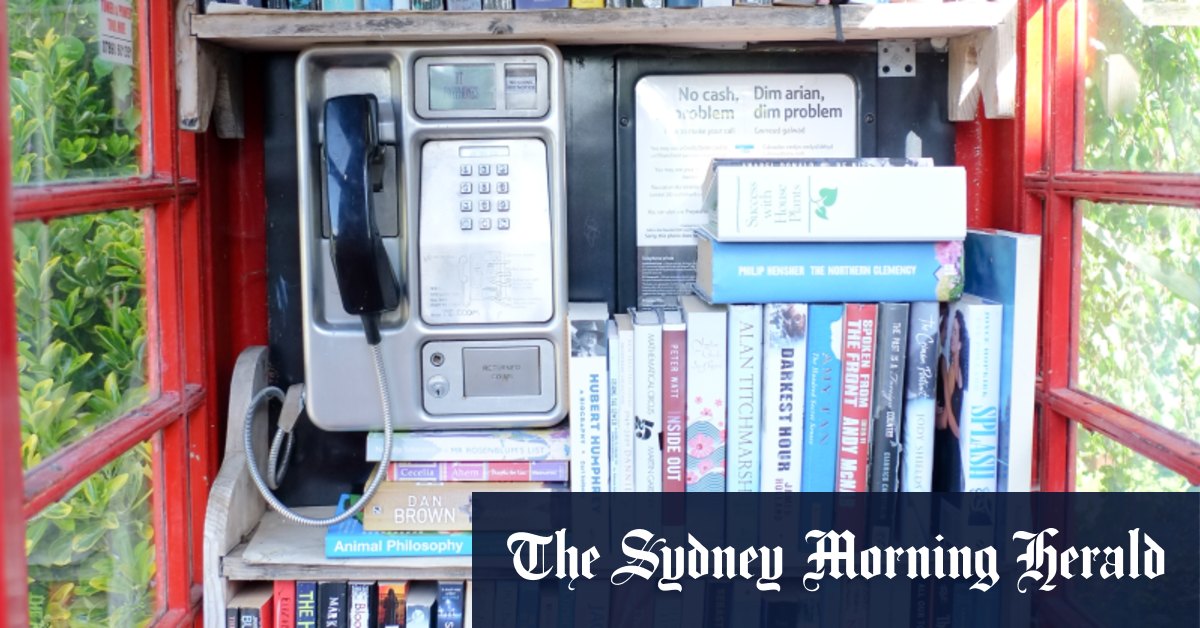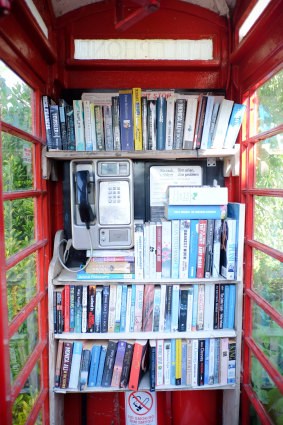

One of the many former phone booths in Britain that found new life as community libraries.Credit: Getty Images
A library that’s 85 kilometres long; a library that will stand when everything else falls down; a library that may not exist; and a library where nobody is allowed to read the books.
This isn’t something out of a Borges story or the Harry Potter books. These are real libraries (past or present) and you can read about them in a lavishly illustrated book that is a wonderful testament to the power and endurance of the written word.
Hidden Libraries: The World’s Most Unusual Book Depositories by D. C. Helmuth lives up to its title. Here are 50 libraries, all of them extraordinary. Some are truly secret, others just not well known. But as librarian Nancy Pearl says in her introduction, they all began because someone, or a group of people, recognised a certain need in their community.
That super-long library is the Vatican Apostolic Archive, property of the Pope. It contains 12 centuries’ worth of priceless documents, including the record of Galileo’s trial and Henry VIII’s letter asking the Pope for permission to annul his marriage to Catherine of Aragon so he could marry Ann Boleyn. (The Pope said no, which, as we know, led to the founding of the Anglican Church.) The vaults of the library were opened in 2011, but only highly vetted scholars are allowed access.
Other ancient libraries include the huge wall of books in the Sakya Monastery in Tibet, built so that even if the entire monastery collapses, the wall will remain standing; and the library of the Mogao Grottoes in China, containing some 50,000 manuscripts, including the world’s oldest physical book, The Diamond Sutra. The library was sealed up in the 11th century and everything remained hidden until 1900. We still can’t be sure that all the treasures have been brought to light.
Loading
As for the fabulous Library of the Moscow Tsars, it’s rumoured to be somewhere under the Kremlin – but it’s remained so hidden that some believe it’s a myth.
The libraries we discover here are not all vast, venerable treasure houses. Some are small and charming. There’s a little free library at the South Pole, put out in the open air when the weather is good. There’s the Think Differently Book Exchange in a fridge in Christchurch, New Zealand. And 150 British red telephone boxes, made obsolete by cell phones, have been turned into libraries for the locals. Queen Camilla sometimes pops in a few of her favourite books.
Who knew there were so many varieties of travelling libraries? The books get about by bicycle (Street Books in Oregon); by donkey (Biblioburro, Colombia); by horse (the Horse Library, Ethiopia); by van (the Hebrides); and by camel (Kenya). Often such transport is the only way to reach deprived communities or remote areas where children don’t have access to books.



